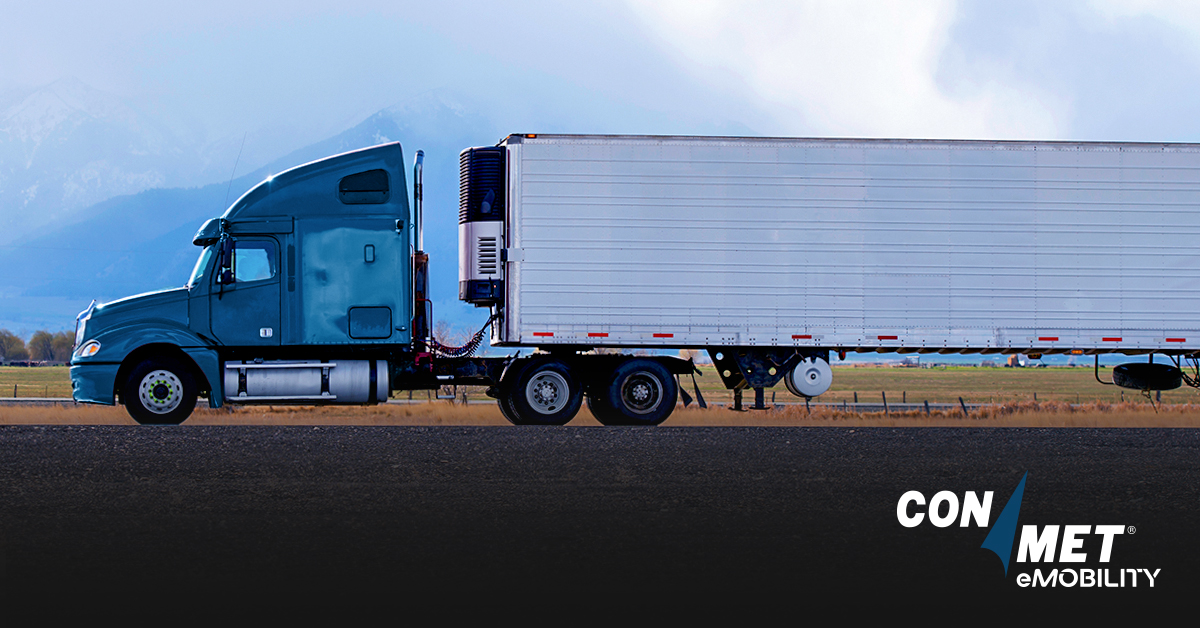The benefits of electric commercial vehicles are becoming more widely understood in the industry today – increased fuel efficiency, lower carbon emissions, simpler maintenance, quieter engines, and so on. But for safe and efficient operation, it is imperative to also fully understand the proper maintenance and service procedures of these vehicles.
As fleets are weighing the pros and cons of adopting electric commercial vehicle technology, high-voltage systems are at the forefront of the conversation. These systems, which are typically considered “high-voltage” at 60V DC or greater, can be extremely dangerous if not properly respected or correctly managed. However, the assumption that high-voltage systems are more dangerous than their low-voltage and mechanical counterparts is somewhat of an urban myth. In fact, thanks to built-in safety features and tailored training programs, vehicles with high-voltage systems can actually be safer than traditional diesel systems.
Safety Begins with the Manufacturer
Because of the inherent danger of high-voltage power, manufacturers have made a focused effort to include robust and reliable safety features and advanced technology within a product design. Additionally, multiple layers of safety methods or procedures are designed to mitigate risk and protect the user, the public, and the system from harm.
One such example is equipotential bonding. This is the process of electrically connecting all exposed conductive pieces with the same voltage. If two charged objects have different potential voltages, the risk of electric shock to a person is increased. Equipotential bonding is put in place to significantly reduce that risk of personal injury or damage to the equipment.
Another is E-Stops, or Emergency Stops, which allow the operator to immediately cut off high-voltage power to the system if needed, including in the event of impact or overheating. This reduces risk of fire and prevents damage to the battery.
A High-Voltage Interlocking Loop (HVIL) is a safety feature designed to protect operators or technicians who come into contact with the high-voltage components of the vehicle. This feature uses a low-voltage loop to monitor the integrity of a high-voltage circuit. If the low-voltage signal is interrupted, the system alerts the operator that there is an issue that needs to be addressed. If this occurs, it means that a HV connection has either loosened, begun to degrade, or that there is a risk of HV exposure. When detected, the system will implement a safe shutdown of the HV system, based on the specific control scheme in use, to mitigate the risk to the public, driver, and system.
Similarly, isolation monitoring circuits regularly monitor the resistance between the high-voltage system and the chassis, which are intended to be fully isolated from each other. This separation helps to ensure a person is not exposed to shock.
These examples are just the tip of the iceberg when it comes to safety features built into high-voltage systems. Manufacturers have implemented multiple layers of redundancy in order to protect, isolate, monitor, and detect any high-voltage risks or issues, allowing for the safest operation possible.
Preparing Personnel for Safe and Efficient Operation
Though high-voltage systems are designed with the maximum level of safety in mind, it is critical that anyone who comes into contact with them is properly trained for safe handling. Fleets and service centers should conduct regular electrical training with employees, equipping them with the most comprehensive and up-to-date information and procedures. A person with a greater understanding of high-voltage systems is far less likely to be harmed or do any damage to the system.
Working with electric vehicles is relatively new for many maintenance technicians and vehicle operators. As training programs are being developed and are ramping up throughout the industry, there are some basics that everyone should keep in mind from the start.
- First, avoid direct contact with high-voltage components unless the battery has been disconnected.
- It is best practice to wear class 0 heavy rubber gloves and other personal protective equipment as needed.
- And of course, always follow the safety procedures required of your company.
A Safety-First Approach to Electrification
At ConMet eMobility, high-voltage safety is a top priority. The PreSet Plus® eHub™ is equipped with all of the safety features listed above, and many more. The system is designed so that operators have little interaction with high-voltage components – the motor, battery, and energy management system are all self-contained in IP67 rated and ISO 16750 validated, durable enclosures. Plus, with ongoing and diligent monitoring, measuring, interaction and information gathering, safety features will continually be optimized with each new generation of eHub.
With these built-in safety features, plus an extensive service network, ConMet eMobility is bringing experienced and expert support to customers and technicians in the field, making way for the safe and successful operation of high-voltage electric equipment.
VANCOUVER, WA | by Anthony Soto, eMobility Product Manager


